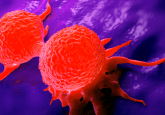Major milestones in methodology: the top news in methodological development

- Key methodology for chiral molecule synthesis
- Researchers improve proteomics method for isobaric tagging
Key methodology for chiral molecule synthesis
Naamah Maundrell (Future Science Group)
Scientists from The Scripps Research Institute (CA, USA) have created a new method for enantioselective remote meta-CH activation, which enables the production of chiral molecules. The study, published in Nature, details the creation of chiral molecules that produce the desired biological activity, compared to the other enantiomer that is inert or produces unwanted side effects.
Jin-Quan Yu, senior investigator (The Scripps Research Institute), commented: “This new method should allow us to explore a large ‘chemical space’ that had been essentially off-limits. The chiral molecules we can make with this method can be designed to interact with widely spaced binding sites on a target protein, for example.”
The method involves the attachment of a new functional group away from the chiral center, which results in the production of a new chiral molecule with two widely spaced functional groups. This spatial arrangement confers a unique chemical activity specific to that molecule.
Researchers demonstrate the use of a ‘transient chiral mediator’ that enables the attachment of a new functional group away from the chiral center. The technique was demonstrated to yield almost 100 percent pure quantities of the desired enantiomer. The team hope to explore new ways to broaden the scope of the method.
Sources: Shi H, Herron AN, Shao Y, Shao Q, Yu JQ. Enantioselective remote meta-C–H arylation and alkylation via a chiral transient mediator. Nature, doi:10.1038/s41586-018-0220-1 (2018); www.sciencedaily.com/releases/2018/06/180618113027.htm
♦
Researchers improve proteomics method for isobaric tagging
Rhiannon Finnie (Future Science Group)
A recent paper published in Analytical Chemistry has described an improved method for quantitative analysis of proteomes. The team responsible from Harvard University (MA, USA), headed by post doctorate student Martin Wühr, described their new method for isobaric tagging, known as TMTc+.
The development of isobaric tags (e.g. TMT) has enabled simultaneous measurements of peptide abundances across several different conditions to be performed. However, previous methods using this technique have experienced key limitations. The simplest version, TMT-MS2, has difficulties distinguishing real signals from background noise which can make read-outs unreliable. TMT-MS3, a more complex method, is reported to be able to improve the signal-to-noise problem, but is slower, less sensitive and requires specialized instrumentation.
Wühr and his team have previously developed a different approach to isobaric tagging (called TMTc) but this also had limitations, specifically with precision. In their recent paper, they explain that, by changing the method of cell sample preparation and by altering the computer algorithm that extracts the data from the mass spectrometer, they were able to combat these limitations and produce their improved TMTc+ method.
Wühr explained: “The TMTc+ method is in a kind of sweet spot compared to the other methods. It provides superb measurement accuracy and precision, it’s at least as sensitive as any other method, and it’s compatible with around ten times more mass spectrometers than TMT-MS3.”
However, the TMTc+ method still has limitations. Wühr reports that the solution to these limitations lie in continuing to develop new isobaric tags.
Sources: Sonnet M, Young E, Wühr M. Accurate, sensitive, and precise multiplexed proteomics using the complement reporter ion cluster. Anal. Chem. doi: 10.1021/acs.analchem.7b04713 (2018); www.eurekalert.org/pub_releases/2018-06/pu-rcc061418.php






